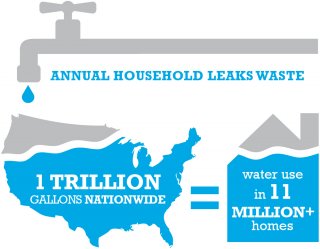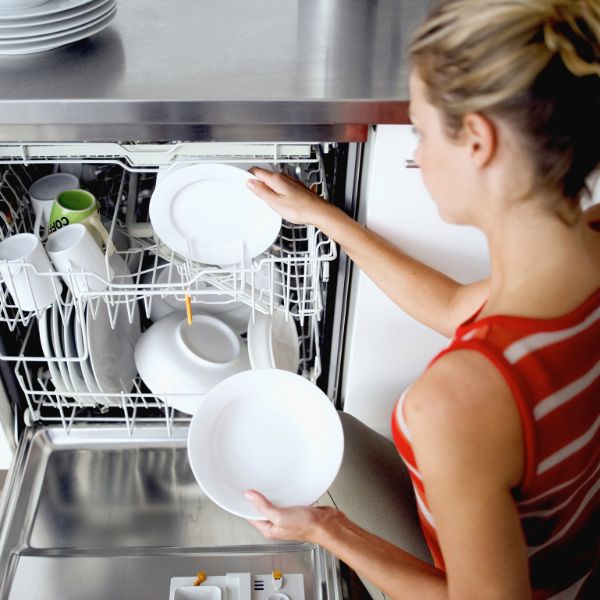Updated on April 21, 2025
No matter where you live, water scarcity is inching closer to home. Over 2.2 billion people still don’t have safe drinking water here on Earth, according to the World Health Organization.
In Barcelona, severe droughts in 2023 drove up water bills and forced some STR operators to raise prices to cover costs, according to EnviroRental. Amenities we often take for granted like hot showers, lush gardens, and sparkling pools have become harder to sustain.
As short-term rental hosts, we have a unique opportunity and responsibility to help. By reducing our water usage, we’re not only preserving a vital resource for future generations but also protecting our profit margins and attracting guests who care.
‘Water is such a precious resource and should never be wasted,” said Bob Garner, Founder of EnviroRental. “Managing it effectively for your short-term rental is not difficult and can save you money and help build sustainability into your operations. Taking action will please your guests, help your bottom line and do the right thing by the planet.’
According to Expedia Group’s 2022 Sustainable Travel Study, 90% of travelers seek sustainable options. More than half are willing to pay more for lodging that actively reduces its environmental impact. Two-thirds want to see more transparency from lodging providers about their sustainability practices. Overall, saving water makes your property more competitive.
The good news is you don’t have to overhaul your property to make a difference. Here are simple, effective steps that can reduce water use and increase your appeal to eco-conscious travelers.
Go low flow
Swap in low-flow showerheads and dual-flush toilets. The Environmental Protection Agency says standard showerheads use about 2.5 gallons of water per minute, while low-flow versions use 2.0 or less. Replacing showerheads could save 2,700 gallons per year for the average household. Models like the Niagara Conservation start around $14 and go up to $35. Dual-flush toilets, which allow for separate flush volumes for liquid and solid waste, can save up to 4,050 gallons per person each year, according to EnviroRental. High-efficiency models like HOROW start at around $220.
Fix leaks fast
The EPA estimates that household leaks waste nearly 1 trillion gallons of water per year nationwide. A dripping faucet can waste up to 3,000 gallons of water annually. Smart leak detection devices like YoLink, which start around $250, offer real-time monitoring and smartphone alerts.

Encourage full loads

Encouraging guests to run only full loads in your home’s dishwasher and washing machine can save thousands of gallons annually. You can remind them with low-cost signage in kitchens and laundry rooms.
And when it’s time to replace your dishwasher or washing machine, consider buying a high-efficiency appliance to save several gallons of water during each load. According to the EPA, the average dishwasher uses 6 gallons of water per load, while energy-efficient dishwashers like those that are ENERGY STAR certified use 3.5 gallons of water or less per load. Likewise, energy-efficient washing machines use 13 gallons or less of water per load, compared with 23 gallons for a non-energy-efficient machine.
Reuse towels and linens
Ask guests to reuse linens and towels. Encouraging towel and linen reuse can reduce laundry-related water use by 30 to 40%, according to the EPA’s WaterSense program. Simple placards or linen reuse baskets can be enough to inspire guests to keep using the same towel.
Install tap aerators
Tap aerators cost as little as $5 and can save up to 337 gallons per month, according to EnviroRental. They’re a quick DIY project that mixes air with water to maintain pressure while reducing flow.
Save water with smart tech
If you’re ready to invest a little more, tech-forward solutions can lead to long-term savings:
Smart irrigation systems like Rachio (starting at $200) reduce outdoor water use by optimizing watering schedules based on weather and soil data. The EPA reports these systems can save up to 14,794 gallons annually per property.
Rainwater harvesting systems start at $80 for simple barrels and can range up to $2,000 for larger systems with pumps and filters. Wahaso Water Harvesting Solutions reports these setups can save 40 to 50% on water bills by reusing water for landscaping or toilet flushing.
Leak detection sensors from brands like Flume offer real-time insights. Many insurers offer rebates for installing these water-saving tools, which help catch problems early and avoid costly repairs.
Slow down evaporation

Use pool covers to prevent evaporation. Pool covers, especially liquid covers like Aqua Blanket, can reduce water loss from evaporation by up to 40%, according to LO-CHLOR. A bottle of liquid cover costs about $50 a gallon and poses less risk than physical covers, which can be dangerous if not used properly.
Add drought-tolerant landscaping. Replacing grass or water-hungry plants with native, drought-resistant species can save 55 gallons of water per year on every square foot of lawn, according to the Southern Nevada Water Authority. Depending on the scope, the cost of installation can range from $3 to $15 per square foot, and some areas offer rebates. Learn more at EPA’s WaterSense Landscaping Guide.
Bring guests into the mission
- Water conservation works best as a community effort. Help guests feel good about doing their part:
- Set clear expectations. Tips like using refillable water bottles or reporting drips can be included in a pre-stay email or welcome binder.
- Use friendly, specific reminders like “Please run the dishwasher only when full.”
- Provide a simple way for guests to notify you of leaks or running toilets.
- Offer refillable water bottles. Stock your property with reusable water bottles guests can use during their stay and take home. Include a list of local refill stations, parks, or cafes with water bottle fill-ups in your guestbook or welcome app. Resources like RefillMyBottle and Tap can help you identify nearby refill points.
Earth Day and beyond
Every drop of water you save at your rental can go toward nourishing ecosystems, agriculture, and families worldwide. It’s a reminder that hospitality is caring for your guests as well as for the planet we share.
Consider making water conservation part of your brand story. Highlight it in your listing, guest experience, social media, and long-term vision. Because when travelers see that you’re doing your part, many will choose you.
…


